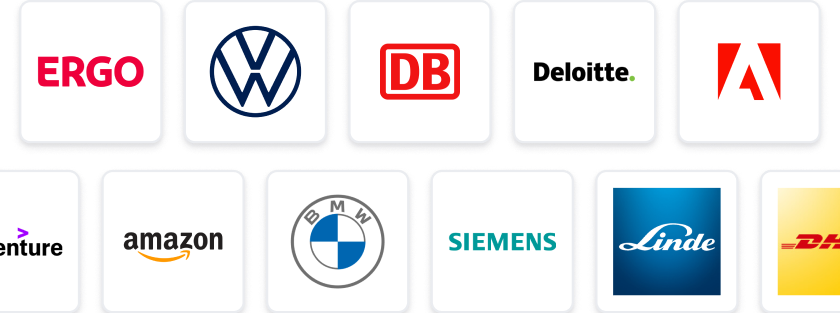At a Glance
- Tasks: Design and deploy AI systems with a focus on retrieval-augmented generation.
- Company: Join a fast-moving startup revolutionising intelligent systems with large language models.
- Benefits: Enjoy hands-on impact, ownership, and the chance to shape tech strategy.
- Why this job: Work on real AI features that reach users and prioritise quality over mere demos.
- Qualifications: Experience with LLMs, Python, and building RAG pipelines is essential.
- Other info: Visa sponsorship available for qualified candidates.
The predicted salary is between 36000 - 60000 £ per year.
We are a fast-moving startup building intelligent systems powered by large language models. We are looking for a software engineer who can design, build, and deploy AI systems end-to-end — especially those involving retrieval-augmented generation (RAG), embeddings, and LLM orchestration. This is a hands-on role with real impact and ownership.
What You’ll Work On
- Architect and implement RAG pipelines that combine vector search, custom retrievers, and LLM reasoning
- Own the evaluation stack — design eval harnesses, benchmarks, and regression tests for LLM outputs
- Build and scale infrastructure for deploying models and agents into real production environments
- Experiment with model behavior, latency trade-offs, and prompt tuning
- Collaborate closely with founders on product, architecture, and research priorities
Core Requirements
- Proven experience building AI systems with LLMs — you’ve worked with tools like LangChain, LlamaIndex, Haystack, or built your own stack
- Hands-on with embedding models, vector DBs (e.g., FAISS, Weaviate, Qdrant), and retrieval logic
- Strong Python engineering skills — you write clean, production-ready code with tests
- Experience building and evaluating RAG pipelines in a real-world setting
- Familiarity with LLM evaluation techniques — you don’t deploy until you’ve tested against real metrics
- Solid understanding of modern cloud infrastructure (e.g., Docker, Kubernetes, serverless, GCP/AWS)
Bonus Skills
- Built custom eval pipelines using tools like Ragas, TruLens, or your own scoring systems
- Experience tuning open-source models (e.g., Mistral, LLaMA, Falcon) or working with APIs (OpenAI, Anthropic, Cohere)
- Exposure to agentic systems, tools + memory management, or multi-step reasoning chains
- Experience in fast-paced, early-stage startup environments
Why This Role Is Unique
- You’ll be engineering AI features that ship to users, not just running experiments
- Evaluation is first-class — we’re serious about quality, not just 'it looks good in the demo'
- You’ll help shape both tech strategy and engineering culture from day one
- We care more about what you’ve built than where you’ve worked
You should apply if: You’re an engineer who enjoys building production-grade AI systems, and you believe evals, not vibes, should drive development. You’re comfortable moving fast, debugging strange model behavior, and taking real ownership of the tech.
Note, this company is sponsoring visas.
Contact Detail:
LinkedIn Recruiting Team
StudySmarter Expert Advice 🤫
We think this is how you could land AI RAG Engineer
✨Tip Number 1
Familiarise yourself with the specific tools mentioned in the job description, such as LangChain and Haystack. Having hands-on experience with these tools will not only boost your confidence but also demonstrate your commitment to the role.
✨Tip Number 2
Engage with the AI community by participating in forums or attending meetups focused on retrieval-augmented generation and LLMs. Networking with professionals in the field can provide valuable insights and potentially lead to referrals.
✨Tip Number 3
Prepare to discuss your previous projects involving AI systems during the interview. Be ready to explain your thought process, the challenges you faced, and how you overcame them, as this will showcase your problem-solving skills.
✨Tip Number 4
Stay updated on the latest trends and advancements in AI and LLM technologies. Being knowledgeable about current developments will help you engage in meaningful conversations with the founders and demonstrate your passion for the field.
We think you need these skills to ace AI RAG Engineer
Some tips for your application 🫡
Tailor Your CV: Make sure your CV highlights your experience with AI systems, particularly with large language models and retrieval-augmented generation. Use specific examples of projects you've worked on that align with the job description.
Craft a Compelling Cover Letter: In your cover letter, express your passion for building AI systems and your understanding of the company's mission. Mention any relevant tools or technologies you’ve used, such as LangChain or vector databases, to demonstrate your fit for the role.
Showcase Your Projects: If possible, include links to your GitHub or portfolio showcasing projects related to AI systems, especially those involving RAG pipelines or LLMs. This will give the hiring team a clear view of your hands-on experience.
Highlight Evaluation Techniques: Discuss your familiarity with evaluation techniques for LLMs in your application. Mention any specific metrics or benchmarks you have used in past projects to show that you prioritise quality and performance in your work.
How to prepare for a job interview at LinkedIn
✨Showcase Your Technical Skills
Be prepared to discuss your experience with large language models and retrieval-augmented generation. Highlight specific projects where you've implemented RAG pipelines or worked with tools like LangChain or Haystack.
✨Demonstrate Problem-Solving Abilities
Expect technical questions that assess your ability to troubleshoot and optimise AI systems. Share examples of how you've tackled challenges in model behaviour or latency trade-offs in previous roles.
✨Discuss Evaluation Techniques
Since the company values quality evaluation, be ready to explain your approach to testing LLM outputs. Talk about any custom evaluation harnesses or benchmarks you've designed and how they improved your projects.
✨Emphasise Collaboration and Ownership
This role involves close collaboration with founders and taking ownership of tech decisions. Share experiences where you worked in a team to shape product direction or made significant contributions to project outcomes.
